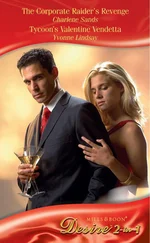It was not mentioned again. Not a single word came from Don Ceriano’s lips, nor any of those who worked with us while we were in Havana. My father’s murder was as effortlessly forgotten as his life.
During the coming months I was to understand more of the connections between Florida and Cuba than I had believed existed. Of these things Don Ceriano spoke, but it was also from conversations between the members of his family and those who attended the house in Miami that I learned much of the background. Mafia money had been moving into Florida since the 1930s, with investments in such places as the Tropical Park Race Track in Coral Gables and Meyer Lansky’s Colonial Inn. During the 1940s the Wofford Hotel had been a base for both Lansky and Frank Costello, Costello having close ties with a man called Richard Nixon who would later become president of the United States. Ironically, during the Watergate investigation some years later, an outfit called the Keyes Realty Company was identified as having been the intermediary between organized crime and Miami-Dade County officials. In 1948 Keyes Realty had transferred ownership of a property to a Cuba-Mafia investment group called ANSAN. Later, that same real estate interest passed in ownership to the Teamsters’ Union Pension Fund and Meyer Lansky’s Miami National Bank. Subsequently, in 1967, ownership was signed over to Richard Nixon, and it was discovered that one of the Watergate burglars, a Cuban exile, was a vice-president of that same Keyes Realty Company. Lou Poller, one of Meyer Lansky’s trusted confederates, had taken over control of the Miami National Bank in 1958, and it was through this bank that Mafia money was laundered, often used to purchase apartment buildings, hotels, motels and mobile home companies. The house in which I stayed during those six years in Miami was one of those real estate interests, and it was to here that many of Don Ceriano’s people would come to talk business, to pass details on about who ‘needed their ticket punched’, or who should ‘get a letter on the Chicago typewriter’.
I heard word of Santo Trafficante Jnr again. His name had been mentioned in Cuba, but I had not appreciated that he had in fact been born right there in Florida. Trafficante had operated the Sans Souci and Casino International operations in Havana, and possessed interests and influence in the Riviera, the Tropicana, the Sevilla Biltmore, the Capri Hotel Casino and the Havana Hilton. In Tampa he controlled the Columbia Restaurant, the Nebraska, the Tangerine and the Sands Bars. Trafficante had fled to Havana in 1957 after Grand Jury subpoenas were issued for his arrest and questioning. In the early part of 1958 he had been questioned by the Cuban National Police regarding the Apalachin Meeting, which he denied having attended. He was still wanted in New York for his alleged involvement in the killing of Albert Anastasia, but the Cuban National Police were interested in his manipulation of the bolita numbers for Cuban operatives on behalf of Fidel Castro.
Whatever may have been the allegations against him, Don Ceriano said enough for me to understand that Santo Trafficante Jnr had overseen all Mafia-related operations in Florida since the death of his father in August 1954. As far back as 1948 and 1949 Trafficante had been involved with Frank Zarate, the principal defendant in a case instigated by the Federal Bureau of Narcotics, who collaborated with US Customs and the New York City Police Department to break a Peruvian cocaine supply coming into the US through Cuba. Irrespective of this matter, Trafficante was granted resident status by the Cuban Immigration Department in October 1957. In a memo issued by a narcotics agent called Eugene Marshall in July 1961, it was made clear that Castro had operatives working in Tampa and Miami who made significant bets on Cuba’s bolita through Trafficante’s organization. Trafficante himself was observed meeting several times with a man called Oscar Echemendia. Echemendia was not only a part-owner of the Tropicana Night Club in Havana, but also one of the most influential controllers of the bolita in Dade County, Miami. It was rumored that after Castro’s seizure of power, after he ousted organized crime from the casinos and hotels in Cuba, he kept Santo Trafficante Jnr in jail as he so disliked the man. This was a cause for amusement among the families in Miami, for they knew that Trafficante was an agent for Castro, and he was influential in establishing the terms upon which the Mafia could return to Cuba.
Thus there was a connection between Florida and Cuba, and thus I was accepted as a member of their family. Ceriano was a main player, a heavy-hitter, and I played my part for Ceriano. I consorted with an organization called Cuban Americans in Miami; I relayed inside information from employees of Radio Martí, a US-government sponsored station, and soon I could utter the words Chi se ne frega with as much conviction as the rest of them. I was young, I was willing, I could wear a silk Italian suit with as much panache and style as anyone, and I felt no compunction. I believed these people, I believed their motives and rationale, and if the instruction came that someone needed to be excommunicated from the world, I executed that request with punctuality and professionalism. To me it was a job that had to be done. I did not ask questions. I did not need answers. In some small way I wanted for nothing.
Once upon a time, as a child perhaps, I had been driven by the urgent desire to become somebody . Among these people, these crazy hot-headed Sicilians and Genovese, I was somebody. I believed I had arrived, that there was a purpose to my life, and considering my natural ability to do things that no-one else was prepared to do, I was afforded a degree of respect and camaraderie that was ordinarily reserved only for blood relatives.
I was Ernesto Cabrera Perez, adoptive son of Don Giancarlo Ceriano, soldier of Santo Trafficante Jnr, head of the Mafia in Miami. There were people here who would figure more prominently as the months became years. It was an era of tension and political subterfuge. Anti-Castro feelings were high amongst some factions of the families, and it was in Miami that wealthy Cuban exiles collaborated with Sam Giancana to oust Castro from Cuba. From what little I could gather, both the CIA and the FBI were instrumental in funding such operations. A man called Robert Maheu, apparently ex-CIA, had hired Sam Giancana to form assassination squads to go after Castro, and Giancana had put his Los Angeles lieutenant, Johnny Roselli, in charge of the operation. Years later, in 1978, when the House Select Committee questioned Roselli he said that those teams were trained for the Kennedy assassination as well. That was all but part of the truth. Kennedy was a different story, a story that would not emerge for more than a year. From Roselli the Select Committee never established any further details. His body was found floating in an oil drum off the Florida coast. Sam Giancana was shot in Chicago. There were three different assassination teams in Dallas on the day Kennedy was killed, and only one was known by Roselli. The other two came from within the United States Intelligence community, and those that filed reports for the Warren Commission, those that handled the legal implications of all subsequent investigations, were far more informed as to what actually occurred than they ever said. They had their own cosa nostra , and they kept their mouths shut and their thoughts to themselves, and have done to this day.
I did not understand the politics, and I did not pretend to. I knew that people visited with Santo Trafficante, and from Trafficante would come messages to Don Ceriano, and some of those messages would find their way to me and I would be sent forth to see to things in the best way I knew how. Connections between Miami and New York were tight, also with Los Angeles, but when I heard of Don Ceriano’s intended move into the casinos and clubs of New Orleans, I felt that an aspect of my own past was in danger of surfacing. I believed I had disconnected, but – through my loyalty and allegiance to those who’d brought me back from Havana – I was to be obliged to return to my own homeland, the place of my birth, the beginning of all these things.
Читать дальше
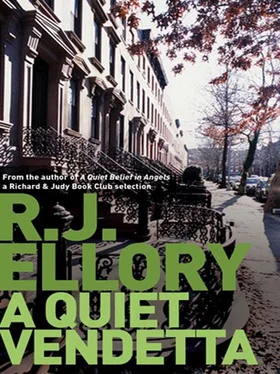
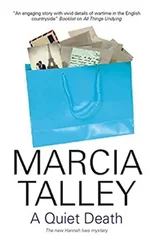

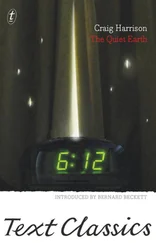
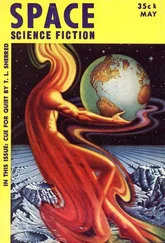
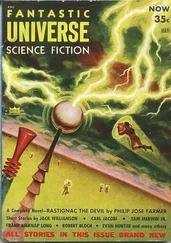

![Quiet Billie - Don't mistake the enemy [СИ]](/books/421973/quiet-billie-don-t-mistake-the-enemy-si-thumb.webp)



